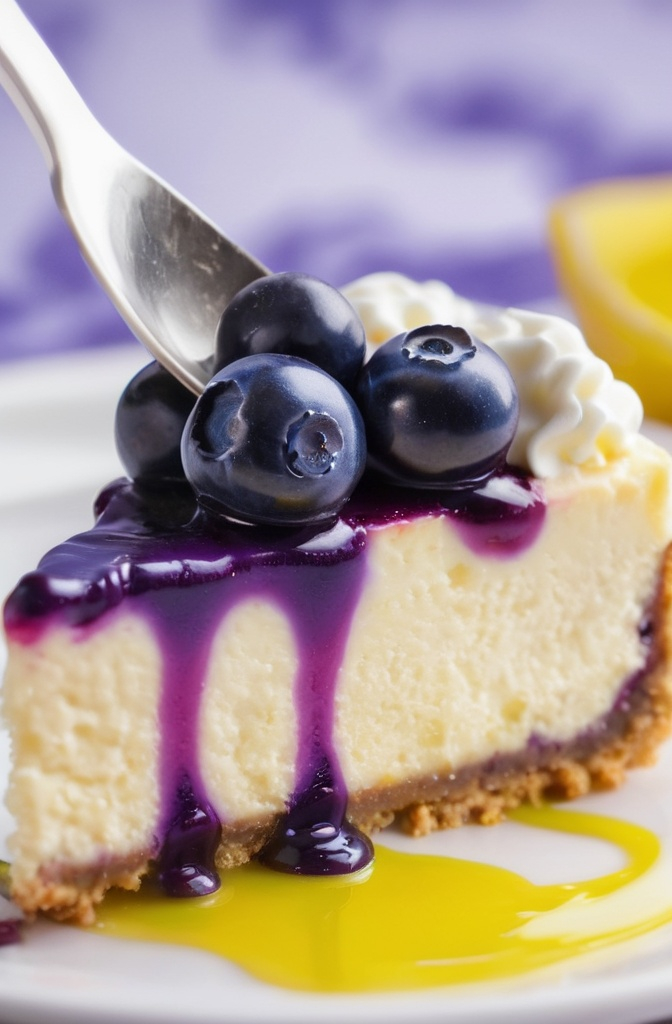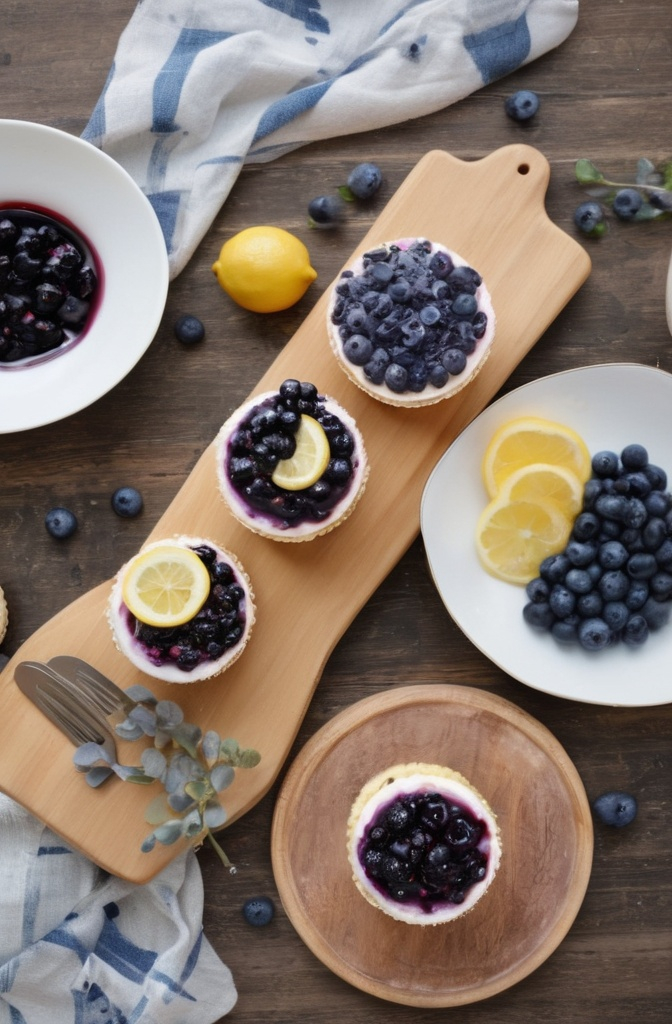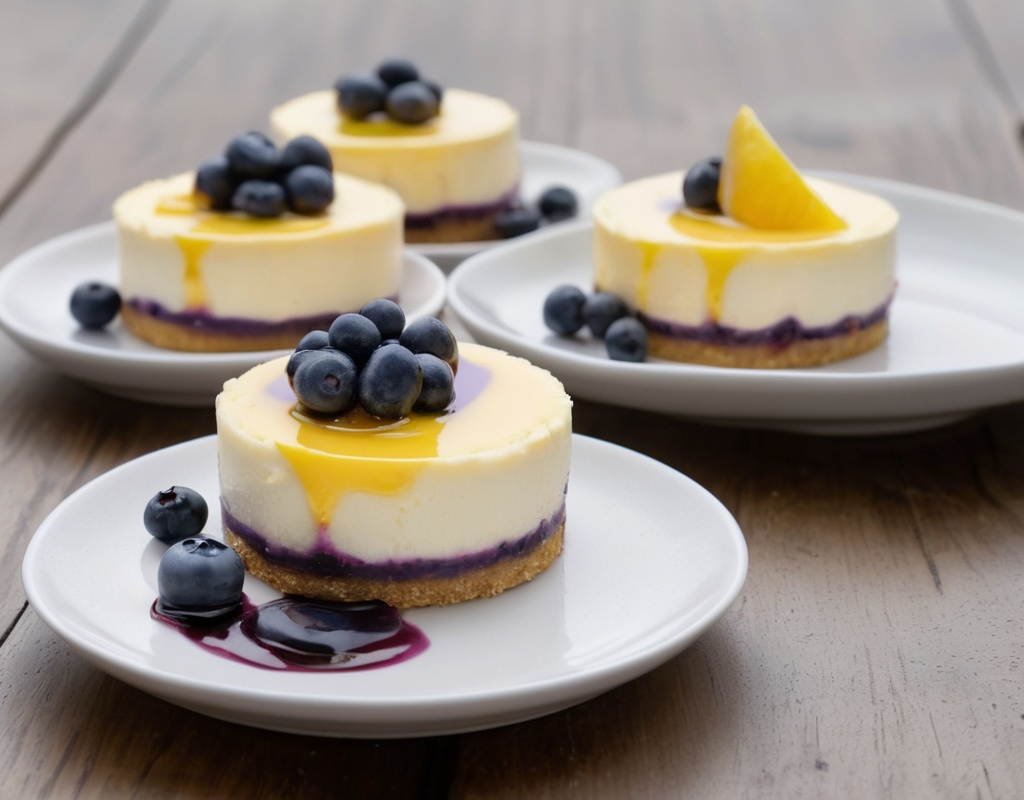Let’s not pretend like lemon and blueberry haven’t been married in kitchens for decades. They have. They just didn’t know they were meant to be mini. That’s where things change. The explosion of single-serve desserts in fine dining, catering, and boutique bakeries has taken what was once a slice-and-serve affair and turned it into something far more refined. Mini lemon blueberry cheesecakes aren’t just cute—they’re strategic, scalable, and frankly, a bit of a flavor ambush.
This piece digs into the anatomy of these little giants. From crust chemistry to flavor balance, we’ll look at what makes them tick and why they’re commanding so much attention in professional kitchens. Plus, we’ll talk trends, plating, preservation, and a few tricks only seasoned pastry pros are talking about.
The Case for Going Mini
Size matters, but not how you’d think. Portion control is now a high-stakes game, and single-serve desserts are the quiet weapon of chefs managing cost, waste, and presentation. A full-sized cheesecake has its place, but it doesn’t quite scream artisanal in the way a tray of precisely torched minis can.
Miniatures offer more than just charm—they offer predictability. A 2.5-inch cheesecake gives you control over bake time, structural integrity, and flavor impact. And they travel better. In catering? That matters. Big time. You want 120 cheesecakes on a board and not a single crack? Go mini or go home.
A Balancing Act: The Flavor Equation
Lemon and blueberry aren’t just complementary—they’re co-dependent. Blueberries are moody little things. Sweet in theory, bland if mistimed. Lemons, meanwhile, are all attitude. Used wrong, they hijack the dessert. Used right, they’re magic.
Here’s the trick: don’t treat the lemon as a seasoning. It’s not a squeeze on top. It’s part of the base. Zest is your friend—don’t skip it. You need the oils, not just the juice. In a 12-mini batch, you’re looking at zest from two whole lemons and juice from just one. Resist the urge to use more juice. It thins out your batter and messes with the set.
As for blueberries? Use wild if you can. Smaller, more intense, less watery. Frozen’s fine if they’re good quality—IQF preferred. And always toss them in flour before folding into batter. No exceptions. Otherwise, you get that awkward purple bleeding and your cheesecakes look bruised.
The Crust: More Than a Base
Most people just blitz graham crackers and move on. That’s a rookie move. The base is the foundation. Weak base, wobbly cheesecake. Go 60/40 cracker to roasted almond meal for depth. Toasted nuts bring out buttery notes that cut through the acidity up top.
You also need a little salt. Not a pinch—a noticeable shake. And don’t use white sugar in the crust. Brown sugar is better. It caramelizes differently, and that tiny bit of molasses actually hooks the lemon. Strange, but true.
Pro tip? Pre-bake your crusts for six minutes. Even in minis. Especially in minis. It helps them resist the dreaded soggy-bottom syndrome when the filling goes in. No one talks about this enough.

Cheesecake Batter Science
Cream cheese is the star, but don’t sleep on the support cast. Your eggs, sour cream, and sugar need to be friends, not strangers. All room temperature. If anything’s cold, it’ll curdle or lump. And nothing ruins mini cheesecakes faster than a lumpy batter. You can’t hide mistakes in a 2-inch mold.
Go low and slow on the mix. Overmix and you whip in air, which cracks your tops later. Under mix and you get grainy pockets. There’s a sweet spot, and you’ll know it by the sheen. Good batter gleams. It’s glossy, thick, and moves like pudding.
For the perfect tang, use a mix of cream cheese and mascarpone. About 75/25. The mascarpone rounds the edge off the lemon and gives it this plush, soft mouthfeel you can’t get from cream cheese alone.
Bake Strategy: The Low-Heat Whisper
Professional pastry chefs know that baking cheesecakes is more like cooking custards. You’re not baking them, you’re coaxing them. Forget 350°F. That’s cake talk. Mini cheesecakes bake best at 275°F to 290°F.
And always water-bath—yes, even minis. You don’t need a full tray in a pan of boiling water. Just fill a deep roasting tray halfway and place your mini molds inside, ideally using silicone or aluminum cups. No leaks, no drama. The steam cushions the heat and prevents cracking.
Bake until just set. The centers should still wobble slightly. That’s the target. They’ll firm up as they chill. If they look done in the oven, you’ve gone too far.
The Chill and Release Game
Patience is non-negotiable here. Once baked, let them cool slowly in the oven with the door cracked. Sudden temp drops make them contract and pull, and you get that weird sinkhole look.
Then into the fridge—overnight minimum. Texture improves dramatically after 12–16 hours. It sets deeper, cleaner. The lemon gets sharper. The blueberries settle. There’s a moment where it just comes together, and it doesn’t happen fast.
Unmold cold. If you’re using a silicone pan, push from the bottom gently while holding the top. Aluminum? Run a thin offset spatula around the edges before lifting out.
Blueberry Compote: The Crown
You can’t just plop raw blueberries on top and call it a day. That’s lazy. A proper compote takes five minutes and tells the story better. In a saucepan, blueberries (fresh or frozen), a squeeze of lemon juice, a bit of zest, and a spoonful of honey. Cook until it just starts to thicken.
You want some whole berries left intact. Don’t make it jammy. It should cascade, not plop.
Cool before spooning over your chilled minis. Just enough to crown. Not drown.
Garnish with Intention
Here’s where aesthetics and function collide. A tiny sprig of mint? Sure. But don’t overdo it. One edible flower per mini? Gorgeous. Powdered sugar dusting? Only if you’re plating à la minute. It turns into sludge in the fridge.
For high-end service, consider a microplane lemon zest twist on top. Adds aroma as the plate hits the table.

Shelf Life and Storage Tips
Here’s the technical edge: these hold beautifully. When properly chilled and sealed, mini lemon blueberry cheesecakes can sit for up to five days. Use airtight containers and don’t stack unless you’ve lined between layers with parchment.
They also freeze better than people assume. Un-topped, they’ll last two months. Thaw slowly in the fridge—24 hours minimum.
Emerging Trends: What’s Next?
Plant-based versions are on the rise, but flavor balance remains tricky. Cashew cream lacks the tang of cream cheese, so many pros are turning to coconut yogurt for backup. It’s not perfect, but it’s promising.
Also, watch for citrus diversification. Meyer lemon, yuzu, even calamansi are appearing in test kitchens. Each brings a different acidity profile that reshapes the blueberry interaction. There’s R&D gold there.
Mini cheesecakes are also moving into hybrid territory. Think cheesecake-mousse layers or brûléed tops. Elevation is the game now.
Common Mistakes Pros Still Make
- Overfilling molds—leads to mushroom tops.
- Skipping the water bath—always a mistake.
- Mixing cold ingredients—destroys texture.
- Using regular cream cheese instead of full-fat—seriously, why?
- Forgetting to taste the batter before baking—basic but critical.
Final Thoughts: Why They Matter
Mini lemon blueberry cheesecakes are more than a trendy item. They’re a lesson in restraint, precision, and the art of flavor balance. In the hands of a seasoned chef, they’re a showcase of technique. In the hands of a beginner, they’re an opportunity to learn everything that matters about patisserie.
Don’t dismiss them because they’re small. Every bite counts. And in this case? Every bite is doing serious work.
Professionally speaking? These aren’t just desserts. They’re statement pieces. Tiny, tart, and totally unforgettable.
You’re not baking these for fun. You’re baking them to impress.
FAQs
What makes mini lemon blueberry cheesecakes better than full-sized ones?
They offer better portion control, faster set times, and cleaner presentation for professional service.
Can I use bottled lemon juice instead of fresh?
Nope—fresh juice and zest are non-negotiable for real depth and brightness.
Are frozen blueberries okay to use?
Yes, as long as they’re high-quality and preferably IQF; toss them in flour before mixing.
How do I stop the cheesecakes from cracking on top?
Bake low and slow, use a water bath, and cool gradually with the oven door ajar.
Can I skip the crust pre-bake step?
You can, but you’ll risk soggy bottoms and less structural integrity—don’t skip it.
Why is my batter lumpy?
Likely because your ingredients weren’t all room temperature or you overmixed.
How long do these mini cheesecakes need to chill?
At least 12 hours in the fridge—overnight is ideal for best texture and flavor.
Can these be made plant-based?
Yes, but balancing flavor and texture is tricky; coconut yogurt and cashew cream are common substitutes.
How long do they last in the fridge?
Up to five days sealed and chilled properly—flavor holds, texture stays firm.
Can I freeze them?
Absolutely—just freeze them un-topped and thaw in the fridge for 24 hours before serving.
What’s the best garnish?
Minimal is best—think compote, a twist of zest, or one edible flower per piece.
Is it okay to use low-fat cream cheese?
No—full-fat is essential for proper texture and flavor in professional results.
How many can I bake at once?
As many as fit in your tray without crowding—just maintain even heat and airflow.
Why does the compote matter so much?
It adds contrast, moisture, and visual appeal without overpowering the cheesecake.
Are minis more profitable in a bakery setting?
Yes—they’re easier to price individually, portion predictably, and scale for catering.

Mariana is a passionate home cook who creates delicious, easy-to-follow recipes for busy people. From energizing breakfasts to satisfying dinners and indulgent desserts, her dishes are designed to fuel both your body and hustle.
When she’s not in the kitchen, she’s exploring new flavors and dreaming up her next recipe to share with the Foodie Hustle community.

